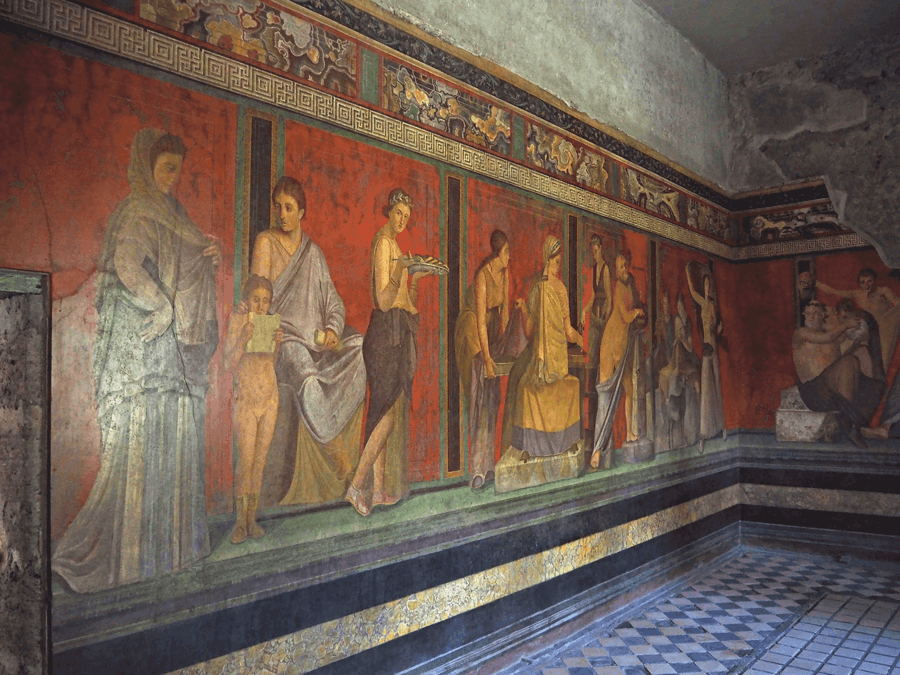
- This course has passed.
A Tale of Two Buried Cities: Pompeii and Herculaneum
28 April 2022 - 26 May 2022
Thursdays 10.45 – 12.45
£63.00 – £260.00

Coffee, tea and biscuits are included on arrival and during half-time break
Description
The ancient Italian cities of Herculaneum and Pompeii were buried during the eruption of the volcano Vesuvius in late August 79 CE.
“How the hours fly by! Absolutely absorbing and brilliantly delivered”
Course Outline
28 April 2022 – Burial and Rediscovery
Using both archaeological evidence and the famous literary account of Pliny the Younger about the heroism and subsequent death of his uncle in his attempts to save a friend from the disaster, this lecture will describe what happened when Vesuvius erupted and the different nature of the disaster for the people of Herculaneum and Pompeii. It will then investigate how the cities were rediscovered and excavated.
5 May 2022 – History and Public Life
This session will focus on the different ancient histories of Herculaneum and Pompeii, their governance and how life was lived in public.
12 May 2022 – The House and Private Life
The first part of the session will investigate different types of house in the two cities, their semi-public and private areas and the importance of the garden in ancient lifestyles. The second part will look at evidence for how the people lived and behaved in the more private domain.
19 May 2022 – Art and Art Collecting
This session focuses on the place the visual arts had in the two cities, both in the public and private domains
26 May 2022 – Entertainment
The series concludes with a look at how the people of the two cities enjoyed their leisure time, in private dinner parties, the baths, theatre, gymnasium, amphitheatre, taverns and restaurants.